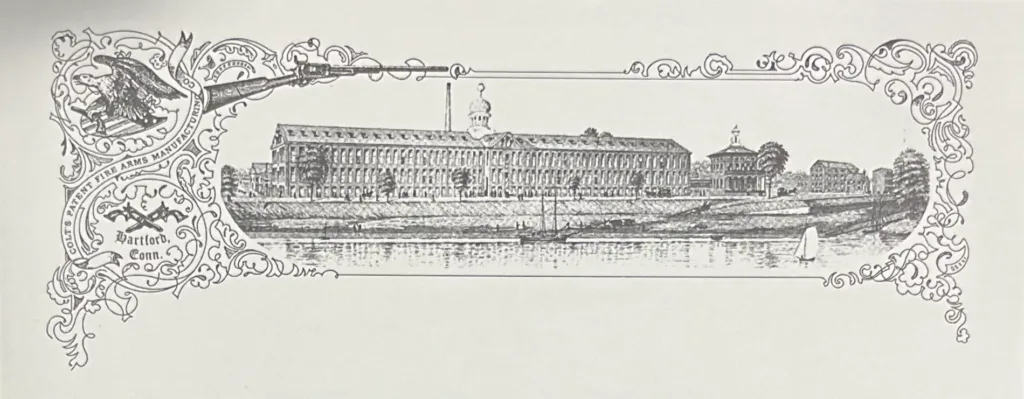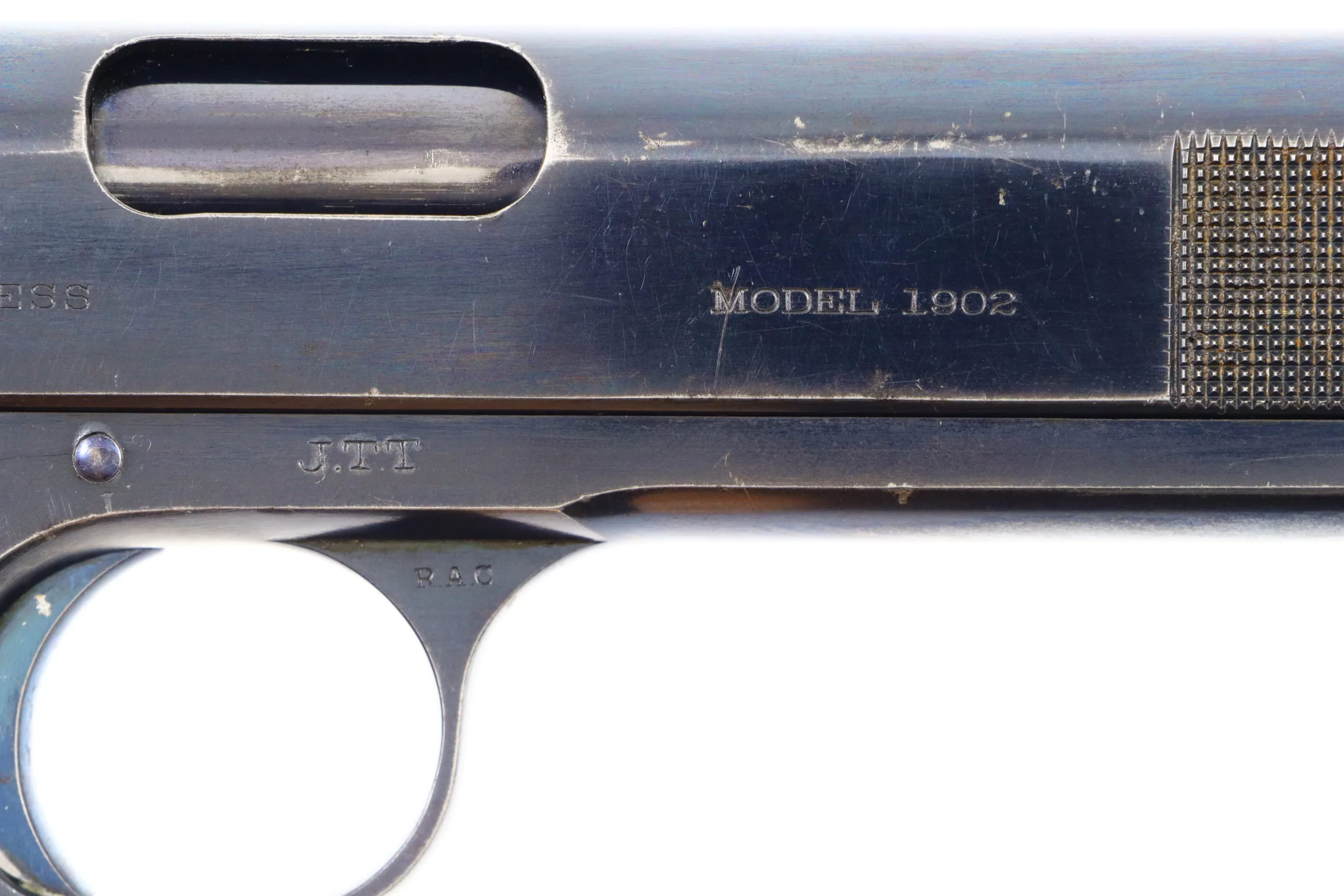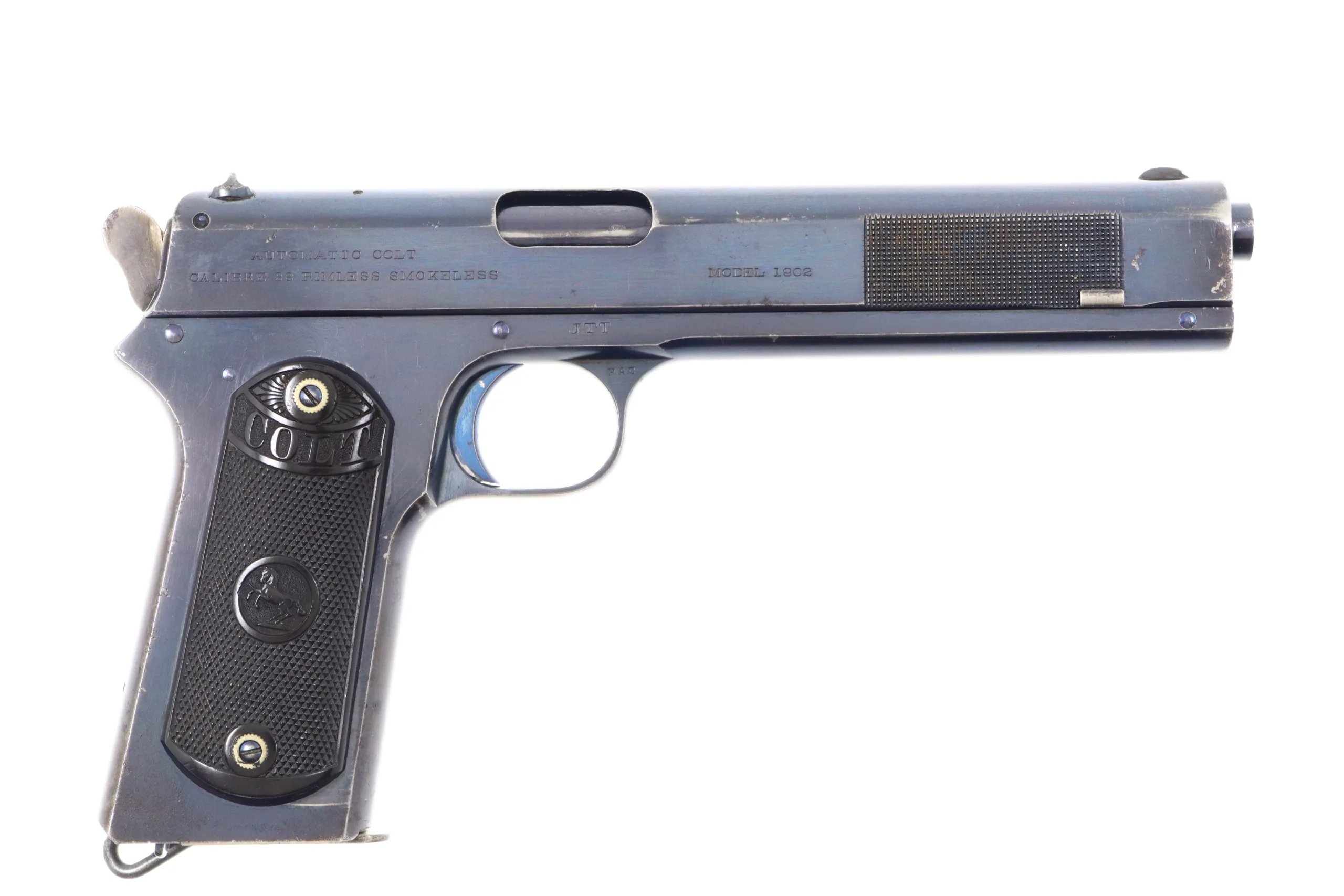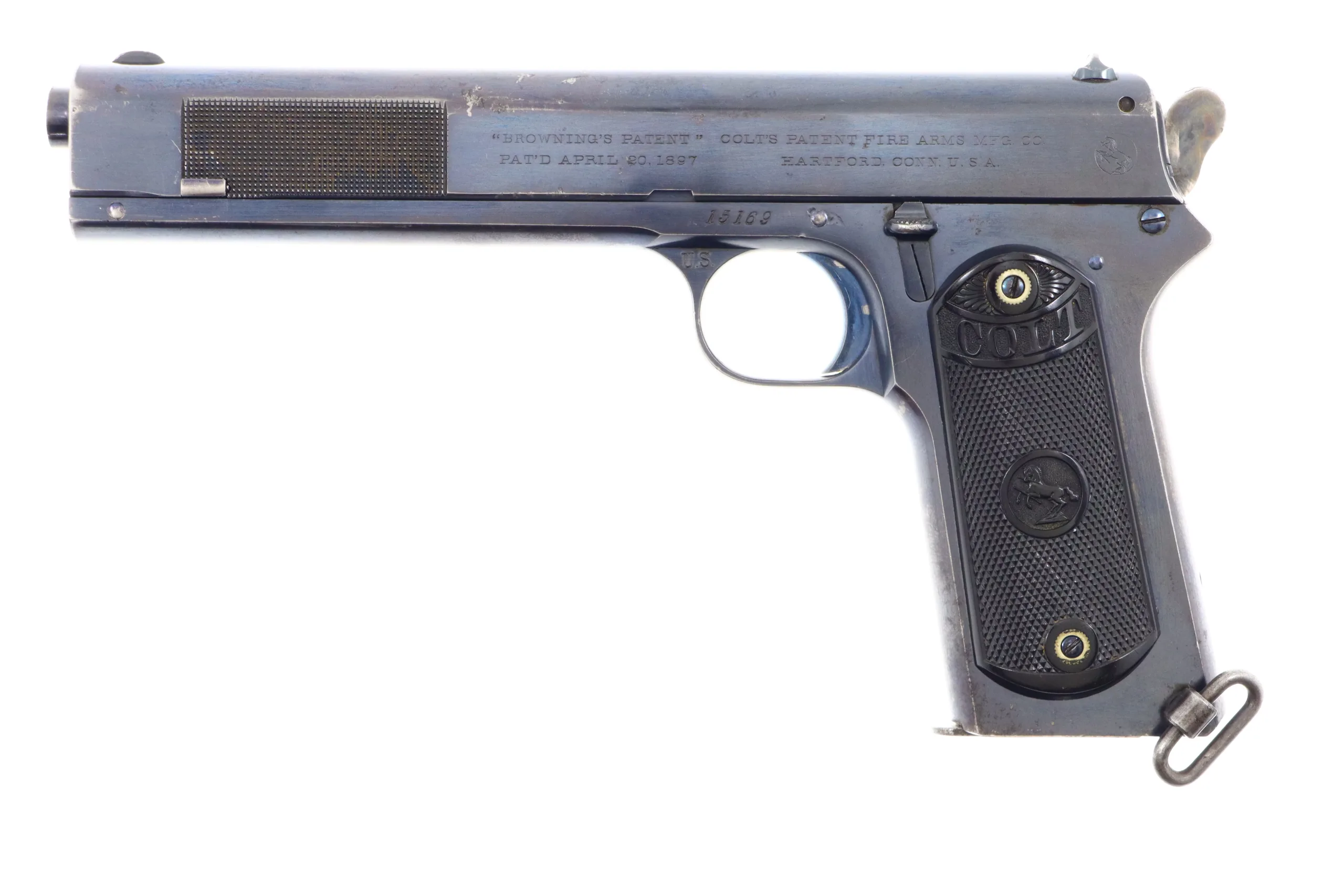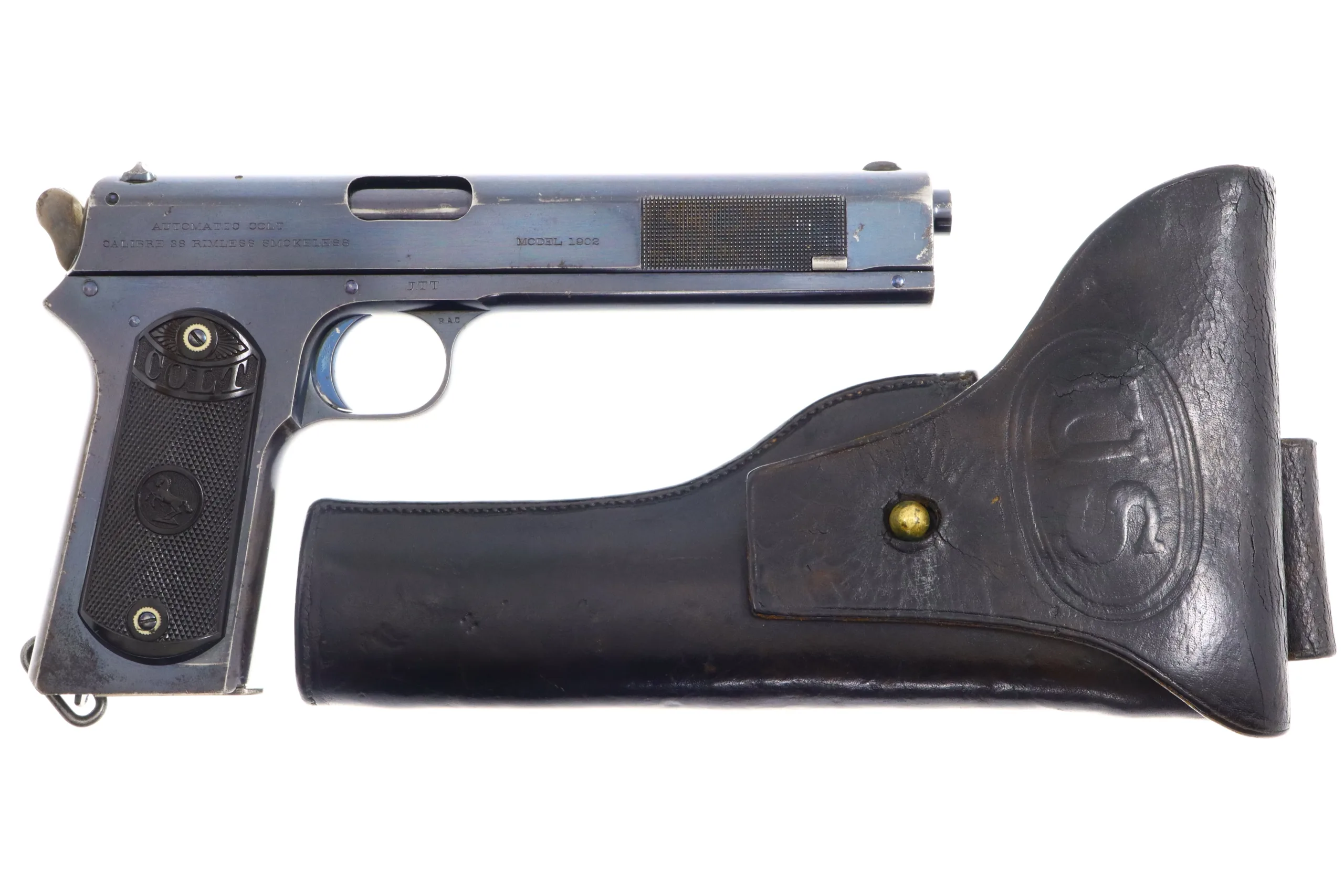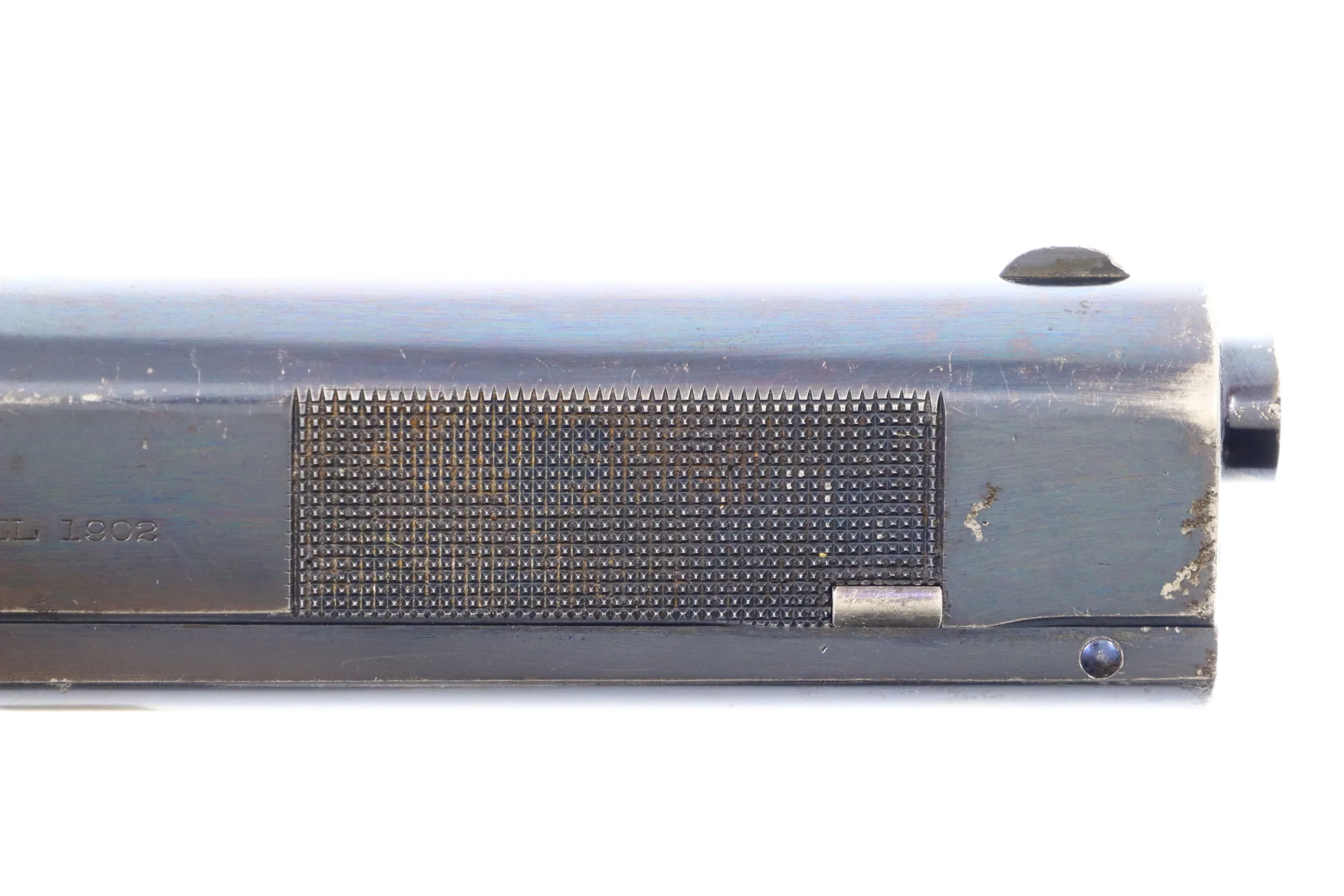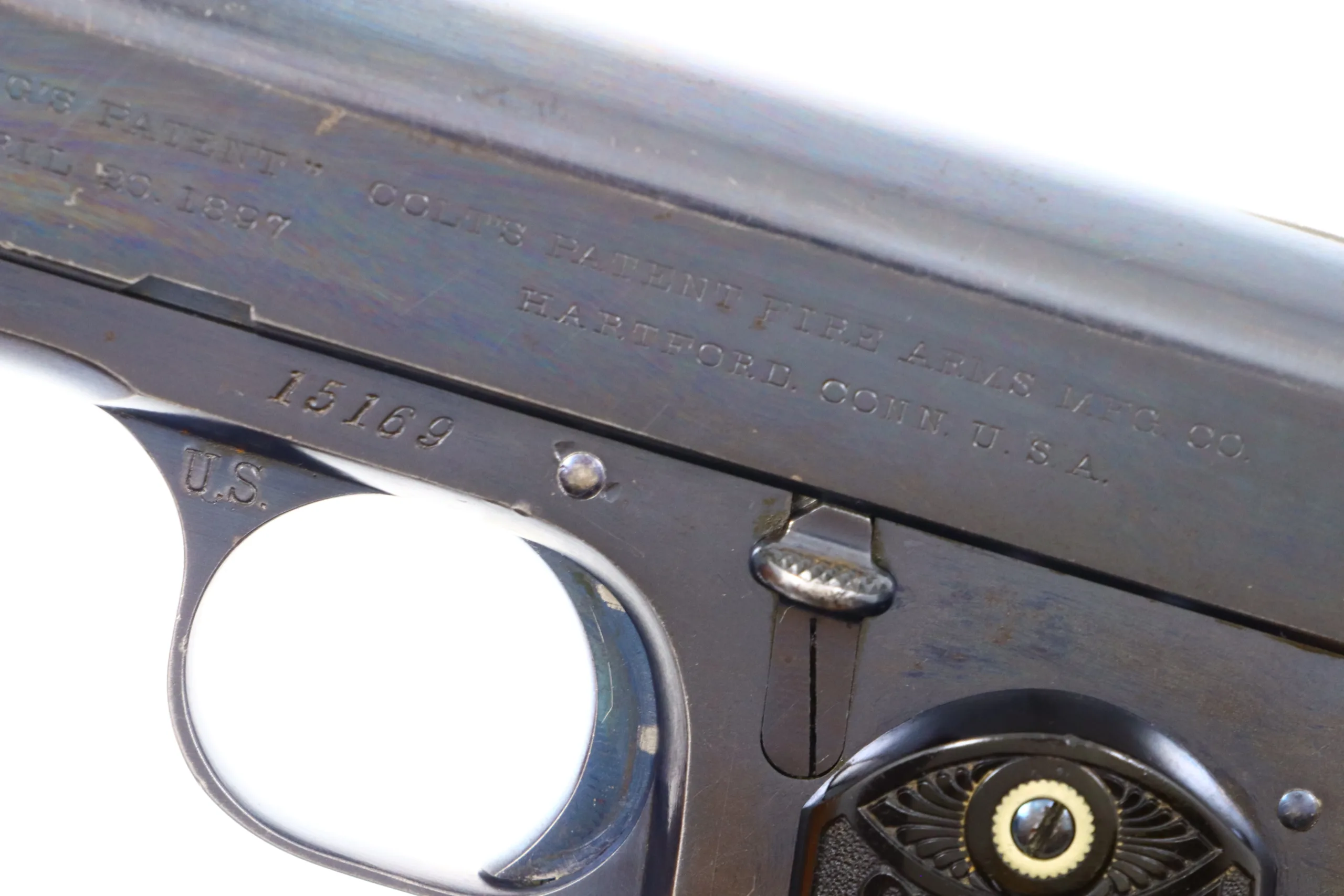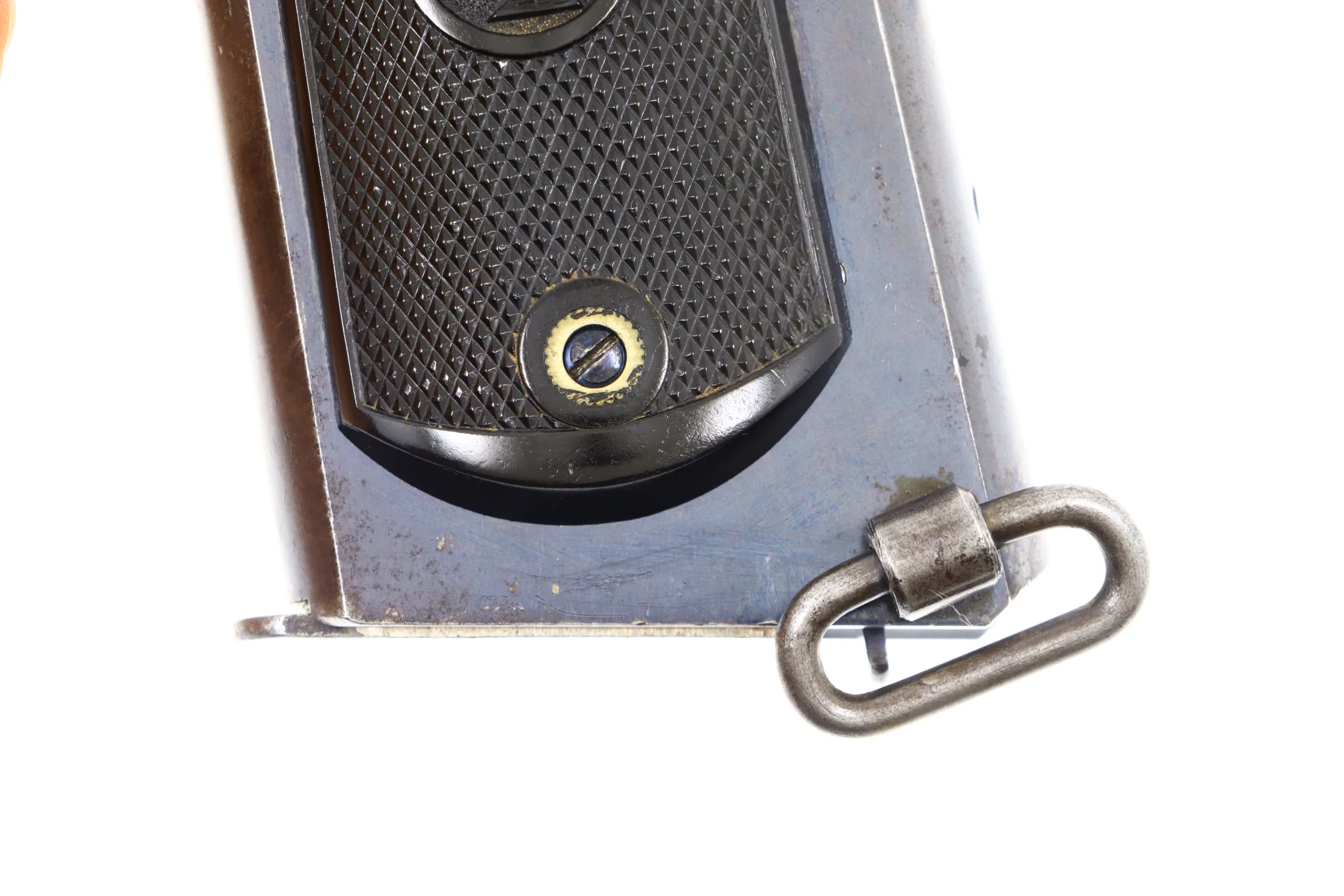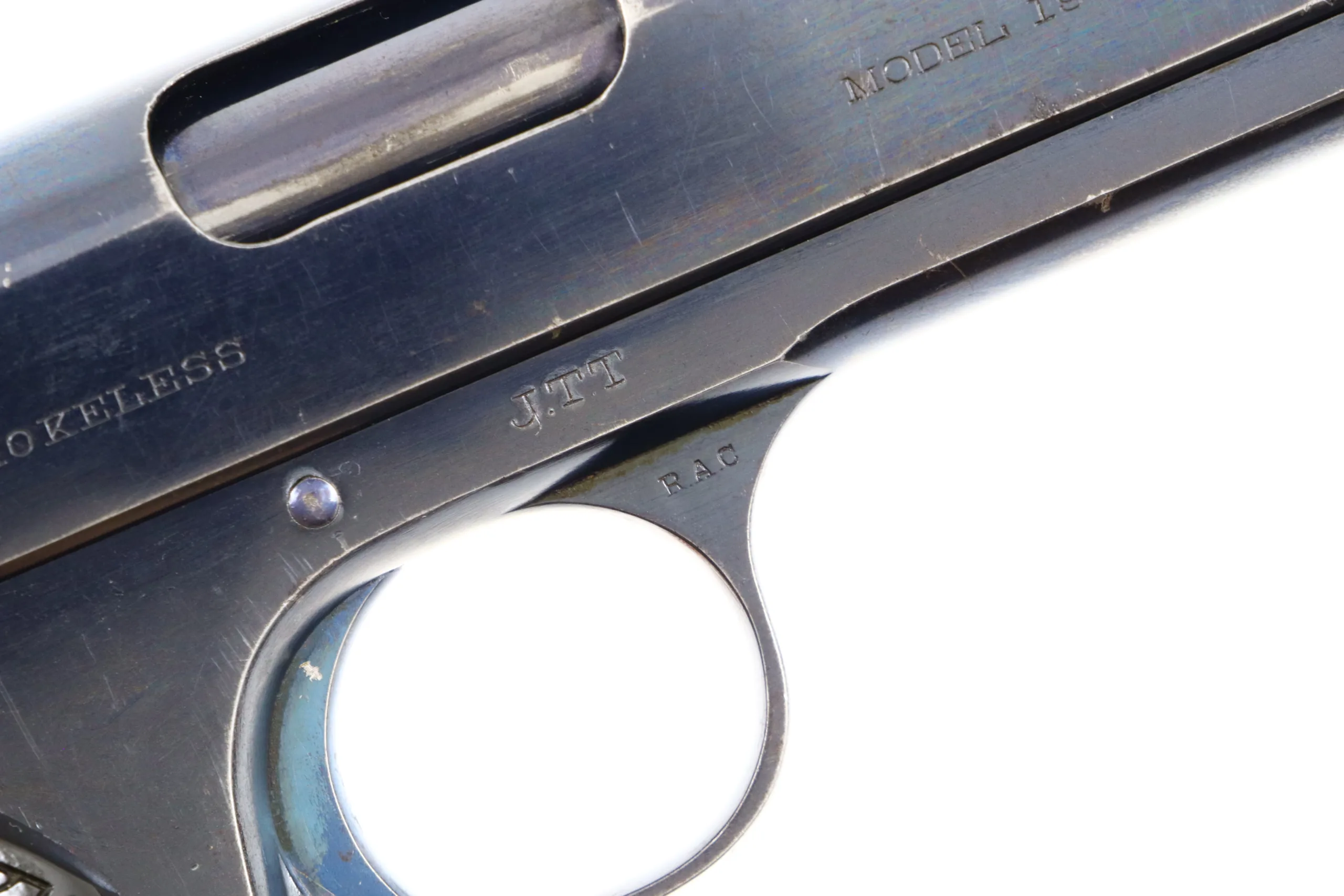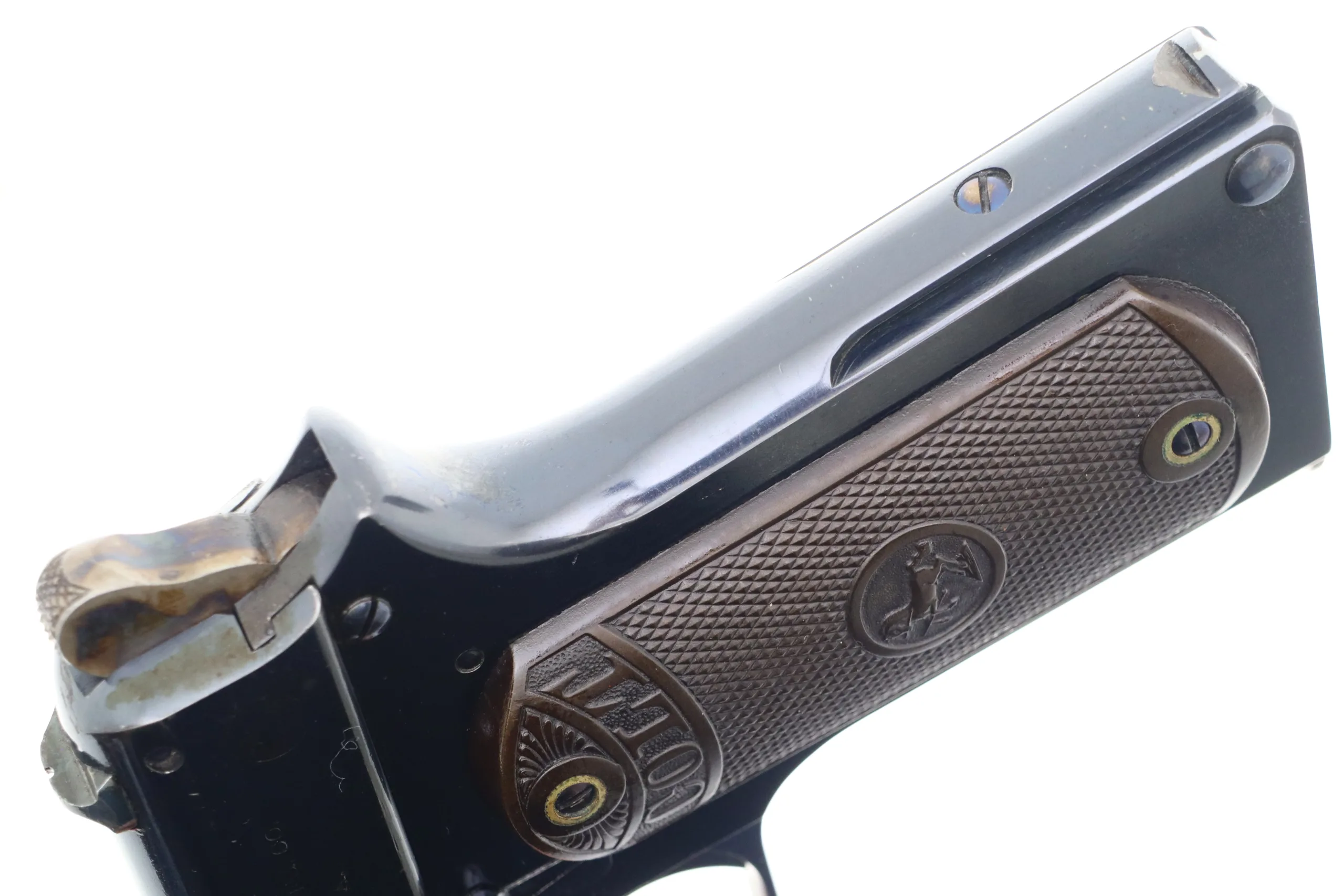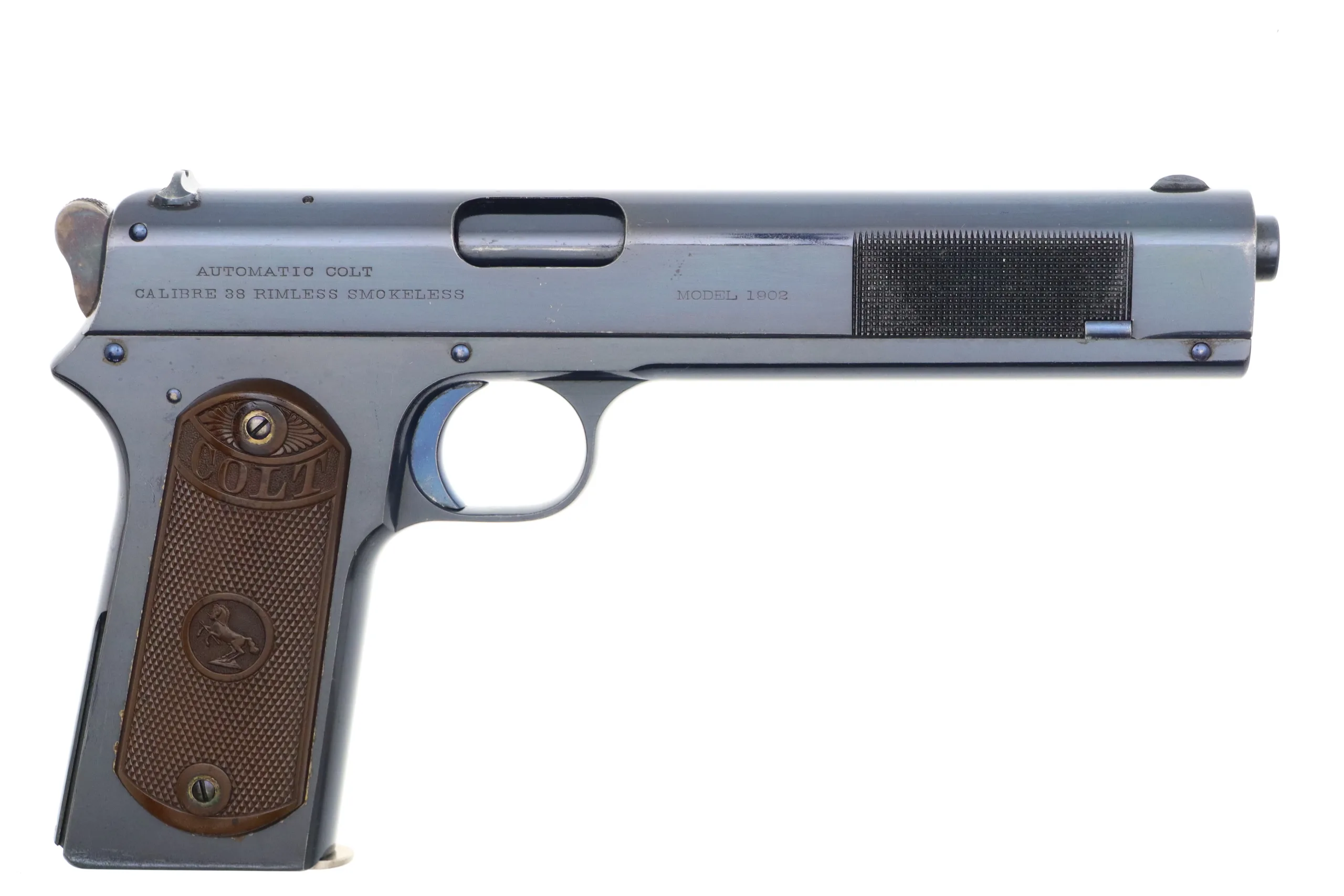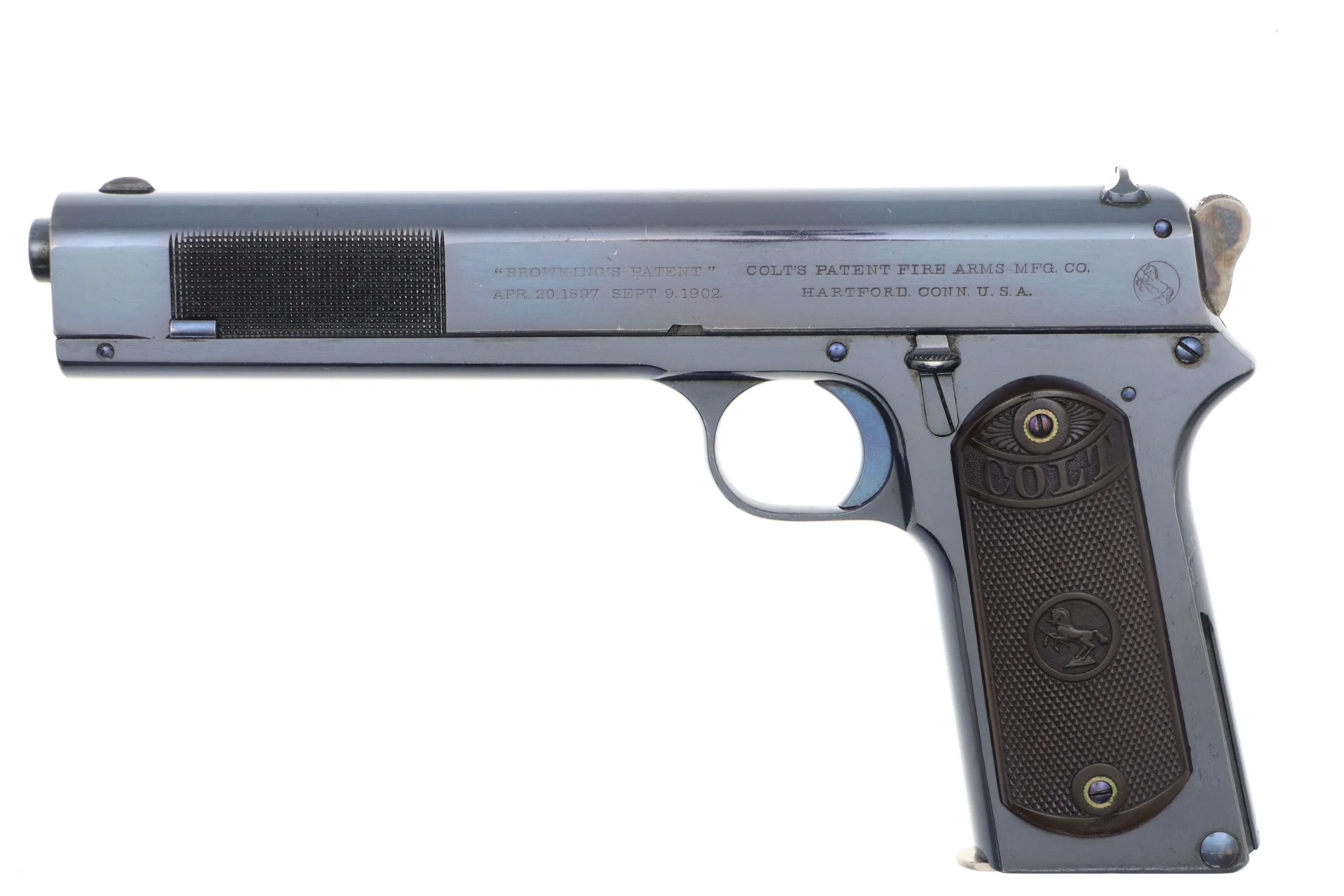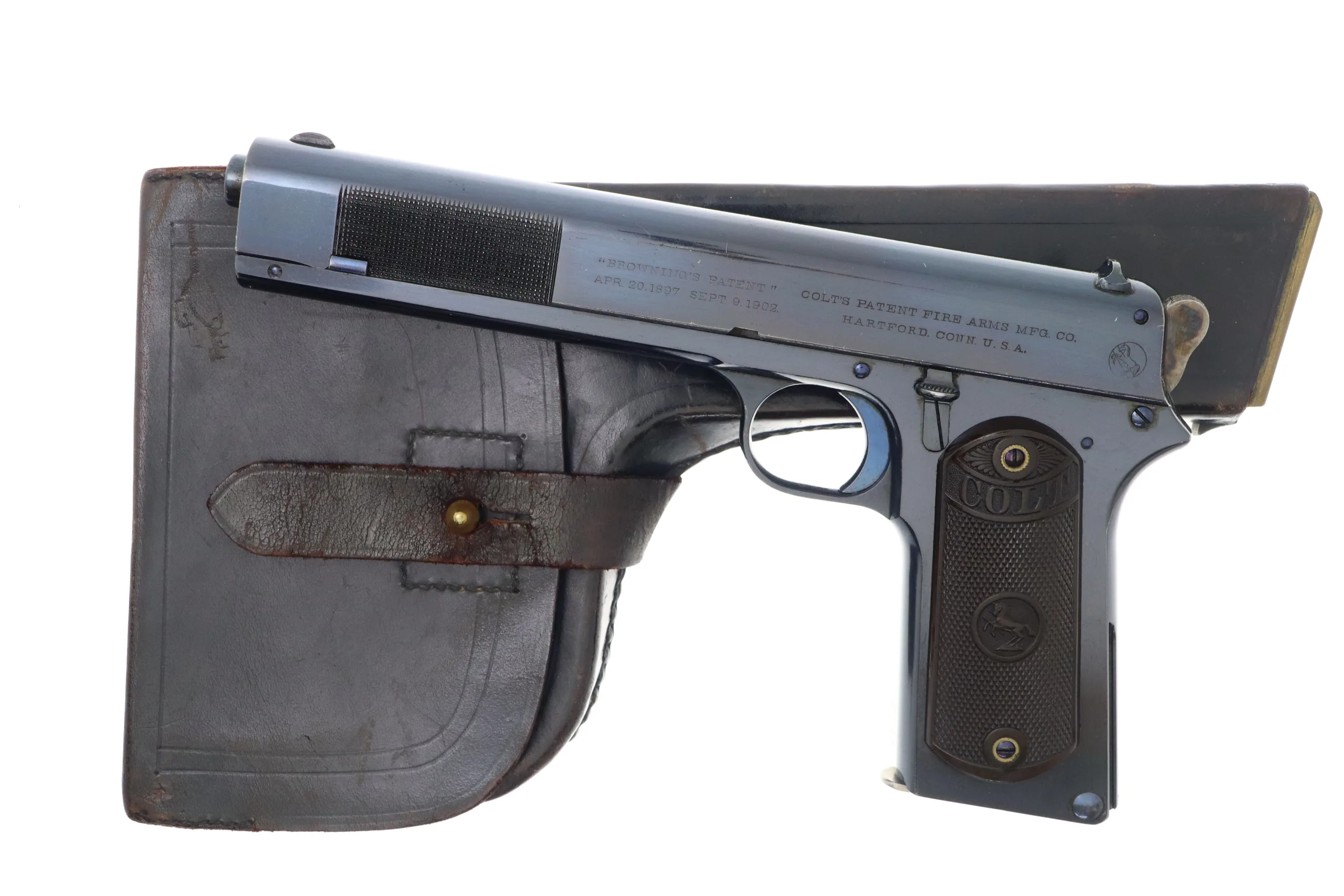The Colt Model 1902 Army is one of the most historically significant semi-automatic pistols in American firearms development. It served as a crucial stepping stone between the early Colt 1900 and the iconic Colt 1911, blending John Browning’s innovative ideas with lessons learned from military field trials.
???? Overview of the Colt Model 1902
- Designer: John Moses Browning
- Manufacturer: Colt’s Patent Firearms Manufacturing Company
- Caliber: .38 ACP (Automatic Colt Pistol)
- Magazine Capacity: 8 rounds, single-stack, detachable
- Action: Short recoil, locked breech, semi-automatic
- Production Years: 1902–1928
- Total Produced: Approximately 18,068 units
???? Historical Context
After the mixed results of the Colt Model 1900 and two small Army contracts (First and Second Contracts) and the Navy contract, both Colt and the U.S. military saw the need for an improved design. The Model 1902 was Colt’s answer, incorporating changes that made the pistol more robust and suitable for military and commercial use.
There were two main variants of the 1902:
- Model 1902 Sporting (civilian market)
- Model 1902 Military (or Army Model) – the focus of this history
???? Key Design Improvements over the Model 1900
- Elimination of the Sight Safety
- The problematic “sight safety” of the Model 1900 (which doubled as the rear sight and a safety lever) was removed.
- Replaced with a fixed rear sight and improved internal safety mechanisms.
- Slide Serrations
- Early production forward slide checkering added to aid in cocking, later (approx. serial number 8,000) changed serrations at the rear of the slide
- Improved Recoil Spring and Linkage
- Enhanced durability and cycling reliability using stronger recoil springs and modified barrel link systems.
- Addition of a Slide Stop (Hold-Open)
- The Military Model had a slide stop that locked the slide open after the last shot—an important feature for military use. Present in some Sporting models.
- Grip and Frame Enhancements
- Grips were checkered hard rubber with “COLT” or rampant Colt logos.
- The grip frame was slightly longer on the military models for improved handling. Military Models have an 8 round capacity and Sporting Models have a 7 round capacity.
- Modified Firing Pin
- John Browning modified the firing pin so that the gun was safe when the hammer is down.
- Hammer Shape Changed
- The hammer was rounded
???? Military Evaluation and Sales
Although the 1902 Army model was never officially adopted as a standard U.S. service pistol, it was:
- Heavily evaluated by the U.S. Ordnance Department
- Purchased in small quantities for testing and trials
???? Field Performance
Pros:
- Higher magazine capacity (8 vs. 7)
- Accurate
- Simple in construction
Cons:
- The .38 ACP cartridge lacked sufficient stopping power (a lesson reinforced during the Philippine–American War)
- No manual safety—a significant oversight for military carry
- No grip safety—making it more dangerous if dropped
- Some reliability issues due to ammo sensitivity and early manufacturing tolerances
???? Variants Within the 1902 Model
Early Models:
- Rounded hammer, early slide markings, forward slide serrations
Middle Production:
- Slide serrations moved to the rear
- Square or spur hammers began to appear
Late Production (Post-1910):
- Improved slide stop designs
- Slight frame modifications
- Higher-quality finishes and rollmarks
???? Role in the Evolution Toward the 1911
The Model 1902 Army directly influenced the development of:
- Model 1905 .45 ACP: First .45-caliber semi-auto from Colt
- Model 1907: Prototypes for U.S. military trials
- Model 1911: The ultimate refinement that included:
- Thumb safety
- Grip safety
- .45 ACP chambering
- Better ergonomics
The 1902 was a critical intermediate that proved the locked-breech system was viable in semi-auto pistols. It taught Colt and the Ordnance Department about necessary features in a combat pistol.
stock



